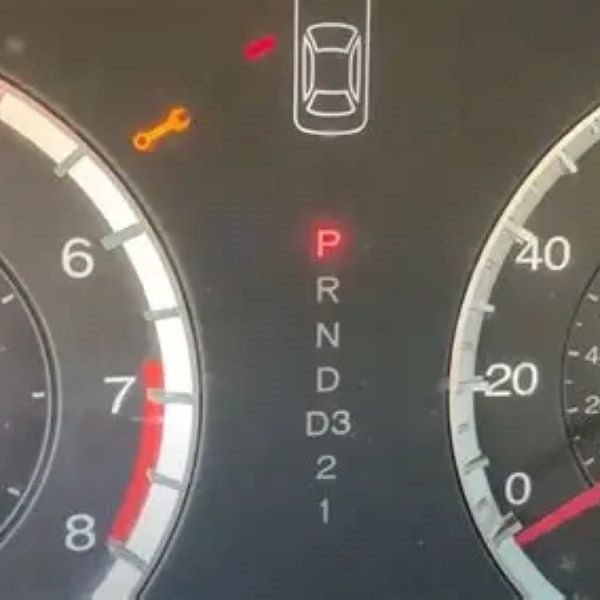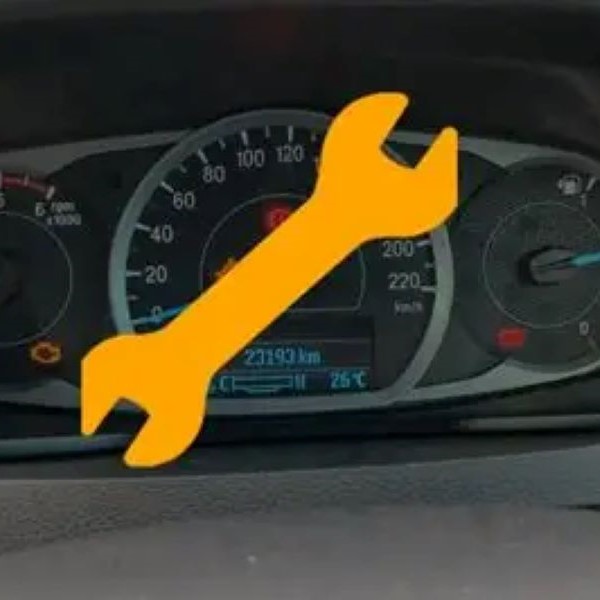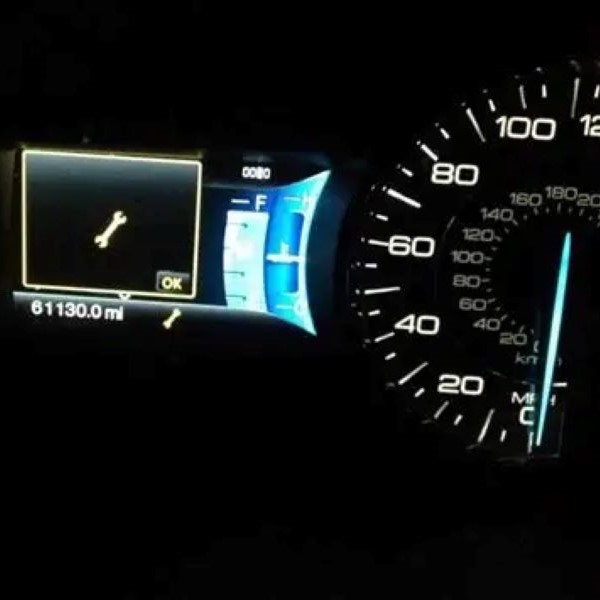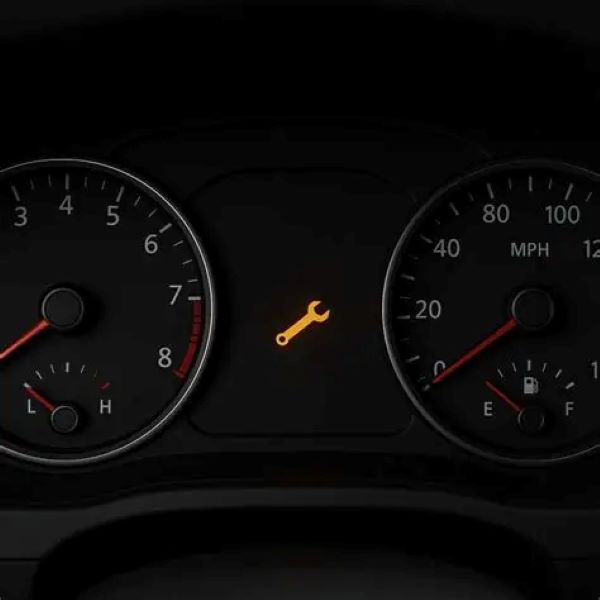
Is the Wrench Light on Car Telling You It’s Time for Maintenance?
The wrench light on car is a common warning that confuses many drivers. It usually appears as a yellow or orange symbol resembling a tool. This indicator does not signal an emergency. However, it means your vehicle needs attention soon. Unlike the check engine light, the wrench light often relates to maintenance alerts or electronic throttle issues. Its exact meaning depends on the make and model of your car. For example, in Ford vehicles, it typically indicates scheduled service time. In some SUVs, it may point to transmission problems.
Moreover, this light connects to the onboard diagnostic system. It monitors performance, mileage, and part wear. When certain thresholds are reached, the system activates the wrench icon. Drivers should not ignore it. Delaying action can lead to reduced fuel efficiency, poor handling, or costly repairs. Understanding what triggers the wrench light on car helps you respond correctly. This guide explains causes, steps to take, and how to reset the alert safely.
 What is the Wrench Light Indicator?
What is the Wrench Light Indicator?
The wrench light on your car is a warning system. It is part of the vehicle’s advanced onboard diagnostics. This light can signal maintenance needs or system issues.
Purpose of the Wrench Light
The wrench light serves to alert drivers of non-critical problems. These can include powertrain issues or required routine service. It ensures that minor issues don’t escalate into significant repairs.
Common Components Linked to This Indicator
The light is often connected to the transmission system or electronic throttle control. It may also indicate problems with software or sensors.
How It Differs From Other Indicators
Unlike the check engine light, the wrench light focuses on maintenance or less severe malfunctions. It provides a snapshot of specific systems requiring attention.
Understanding the wrench light is vital for your car’s health. It ensures timely repairs are carried out, preventing further issues.
Common Reasons Why the Wrench Light Comes On
Understanding why the wrench light on your car activates is crucial. It often points to maintenance needs or specific system issues. Here are some common reasons:
- Transmission Problems: Issues with your car’s transmission system may trigger the wrench light. Low transmission fluid or malfunctioning components can be the cause.
- Electronic Throttle Control (ETC) Errors: Faults with the throttle body or related components frequently activate the wrench light. This can affect your car’s acceleration and performance.
- Routine Maintenance Overdue: Missing scheduled maintenance services, such as oil changes or air filter replacements, can activate the warning.
- Sensor Malfunctions: Faulty sensors, like those monitoring the powertrain or emissions system, can cause the light to appear.
- Software or Calibration Issues: Problems with the car’s onboard software or incorrect calibrations may result in the light turning on.
- Powertrain Control System Errors: If your vehicle’s powertrain cannot function properly, the wrench light may illuminate as a precaution.
Addressing these issues promptly can help avoid further damage. Regular check-ups and diagnostics can help identify and resolve these problems efficiently.
 The Difference Between the Wrench Light and Check Engine Light
The Difference Between the Wrench Light and Check Engine Light
The wrench light and check engine light have different purposes. Understanding these can help you address issues accurately.
Focus Areas of Each Light
- Wrench Light: This usually relates to maintenance or non-critical issues. Common problems include transmission errors or overdue services.
- Check Engine Light: This light typically indicates engine or emissions-related issues. These are more serious and urgent.
Severity of Warning
- The wrench light often signals less severe problems. It allows time to schedule a repair.
- The check engine light indicates critical issues. These require immediate attention to avoid further damage.
Diagnostic Process
- The wrench light generally targets specific systems like the powertrain or throttle control.
- The check engine light covers a broader range, including sensors, engine performance, and fuel systems.
Understanding the key differences ensures you respond appropriately to both warnings. Always check your car’s manual for guidance.
How to Diagnose the Wrench Light on Your Car
Diagnosing the wrench light on your car can save time and prevent expensive repairs. Follow these steps to identify the problem:
1. Consult Your Vehicle’s Manual
Start by checking the owner’s manual. It will offer guidance on what the wrench light might indicate for your specific make and model. Manufacturers often link this light to certain systems or maintenance schedules.
2. Use an OBD-II Scanner
An OBD-II scanner is an essential tool to diagnose car issues. Plug it into your car’s diagnostic port, usually located under the dashboard. The scanner will provide error codes that correspond to specific faults.
3. Analyze the Error Codes
Refer to the scanner’s provided codes to identify potential problems. Common codes linked to the wrench light include issues with the powertrain, throttle control, or transmission.
4. Inspect Key Components
If error codes point to specific parts, like the transmission or throttle body, examine these components. Look for visible damage or abnormalities. Address any worn or malfunctioning parts.
5. Check Fluid Levels
Low fluid levels, such as transmission fluid, might activate the wrench light. Inspect and refill as needed. Use fluids recommended by the manufacturer.
6. Reset the Warning Light
After you address and resolve the issue, reset the warning system. Many OBD-II scanners allow you to clear the codes. If the light persists, the issue might require deeper investigation.
7. Seek Professional Diagnostics if Needed
If your diagnosis doesn’t resolve the problem, consult a professional. Mechanics have advanced diagnostic tools and expertise to pinpoint the fault.
Prompt diagnosis of the wrench light helps maintain your car’s performance. Regular checks and quick action ensure long-term vehicle health.
Steps to Take When the Wrench Light Appears
If the wrench light on your car turns on, take immediate action. Addressing the issue promptly can prevent further damage to your vehicle. Here are the recommended steps:
1. Pull Over Safely
Find a safe location to pull over. Avoid driving further if the car feels unstable. This ensures both your safety and your car’s health.
2. Check the Owner’s Manual
Your owner’s manual provides valuable information. It explains what the wrench light indicates for your car. Look for guidance specific to your vehicle make and model.
3. Inspect Visible Issues
Conduct a quick visual inspection. Check for obvious problems like fluid leaks or unusual sounds. This can help identify simple causes of the warning light.
4. Use an OBD-II Scanner
If you have an OBD-II scanner, use it to read error codes. Plug it into your car’s diagnostic port to get accurate details about the fault.
5. Address Routine Maintenance Needs
Sometimes, the wrench light appears due to overdue maintenance. Change the oil, replace filters, or check other regular service items. Completing these tasks may turn off the light.
6. Refill Fluid Levels
Inspect and refill necessary fluids like engine oil or transmission fluid. Low levels can trigger the warning light.
7. Test Drive the Vehicle
Once you have taken corrective steps, test drive your car. Ensure the wrench light doesn’t reappear. If it remains off, the issue might be resolved.
8. Visit a Mechanic if Necessary
If the light persists, consult a professional mechanic. They have advanced tools to diagnose and repair underlying problems.
Addressing the wrench light promptly is crucial. Follow these steps for safe and effective problem resolution.
Can You Drive with the Wrench Light On?
Driving with the wrench light on is not always safe. The decision depends on the issue causing it.
When It’s Okay to Drive
- If the wrench light signals overdue maintenance, you can usually drive a short distance.
- Issues like low fluid levels or minor sensor errors may allow temporary driving.
- Check your car’s performance. If it’s driving normally, the issue might not be urgent.
When to Avoid Driving
- Stop driving if the light indicates powertrain or transmission errors.
- Unusual sounds or unstable performance signal serious problems. Do not continue driving.
- Ignoring critical issues can lead to more expensive repairs or safety risks.
What to Do If You Must Drive
- Drive slowly and avoid highways or heavy traffic.
- Reduce stress on the vehicle by accelerating and braking gently.
- Head directly to a service center for diagnostics and repairs.
Understanding the problem behind the wrench light ensures safe driving. Always prioritize your safety and the car’s health.
 How to Prevent the Wrench Light from Activating in the Future
How to Prevent the Wrench Light from Activating in the Future
Preventing the wrench light on your car is easier with proper maintenance. Simple steps can ensure its long-term health:
Regular Schedule for Maintenance
Stick to your car’s recommended maintenance schedule. Perform all suggested services on time. Typical tasks include oil changes, filter replacements, and tire inspections.
Monitor Fluid Levels
Check key fluid levels regularly. Focus on transmission fluid, engine oil, and coolant. Refill or replace them as needed.
Keep an Eye on Sensors
Inspect and test your car’s sensors periodically. Faulty sensors often trigger the wrench light. Ensure throttle control and powertrain sensors operate correctly.
Update Software
Stay updated with your car’s software needs. Outdated software can impact its diagnostics system. Follow the manufacturer’s guidelines for updates.
Avoid Driving Habits That Cause Wear
Drive gently to reduce vehicle wear. Avoid hard braking and aggressive acceleration. Use gears properly, especially with manual transmissions.
Conduct Routine Checks
Conduct regular visual inspections under the hood. Look for leaks, worn belts, or loose wires. These checks can prevent issues before they escalate.
Use High-Quality Parts
When replacing components, choose manufacturer-recommended or high-quality parts. Cheap alternatives can fail faster and cause lights to activate.
Select Recommended Fluids
Always use manufacturer-approved fluids for your car. Incorrect fluids often lead to malfunctions.
Seek Professional Inspections
Take your car for periodic professional inspections. Mechanics can check systems more thoroughly. Professional checks catch issues early.
By following these steps, you can significantly reduce the chance of the wrench light turning on. Regular care ensures a reliable and well-performing car.
When to Seek Professional Help for the Wrench Light
Recognizing when to consult a mechanic is crucial. Some wrench light issues require advanced diagnostics.
Persistent Wrench Light After DIY Fixes
If the wrench light stays on after basic fixes, seek professional help. Unresolved issues might signal complex problems.
Unusual Sounds or Performance Changes
Strange noises, poor acceleration, or unstable driving are red flags. A mechanic can identify hidden faults.
Error Codes Beyond Basic Understanding
Error codes from an OBD-II scanner can sometimes be unclear. Professional mechanics have tools to decode complex issues.
Powertrain or Transmission Problems
Powertrain or transmission errors are critical. Driving with these issues risks severe damage. A mechanic can safely address them.
Sensor or Software Malfunctions
Faulty sensors or software glitches often require expert handling. These errors may require specialized diagnostic tools.
Regular DIY Maintenance Cannot Resolve
If routine actions like fluid refills or sensor checks fail, get professional diagnostics. Experienced technicians can find overlooked issues.
Urgent Vehicle Symptoms
Smoke, overheating, or strong odors need immediate attention. Driving further may worsen the problem.
Manufacturer-Specific Issues
Some problems are unique to specific car brands. Professionals familiar with your vehicle are better equipped to fix them.
Professionals ensure accurate diagnosis and repairs for the wrench light. Timely action prevents bigger issues and keeps your car safe.
 Frequently Asked Questions About the Wrench Light on Car
Frequently Asked Questions About the Wrench Light on Car
What does the wrench light on car mean? It varies. In Fords, it’s maintenance. In Nissans, it may be transmission. Always check your manual.
Does it mean my car is unsafe? Not always. If driving normally, it may be a reminder. If performance drops, stop driving.
Can I drive with the light on? Yes, briefly. But get it checked soon. Extended driving risks damage.
How is it different from the check engine light? The check engine light signals active engine faults. The wrench often means service or throttle issues.
Can I reset it myself? Often yes. Use pedal tricks or buttons. Some need a scanner.
Will it go off by itself? Rarely. Most stay on until reset.
Where is the OBD-II port? Under the dashboard near the driver’s knees. Plug in any scanner there.
 Final Thoughts on Responding to the Wrench Light on Car
Final Thoughts on Responding to the Wrench Light on Car
The wrench light on car is more than just a reminder—it’s a communication tool from your vehicle. Whether it signals routine service or a developing fault, responding promptly ensures reliability and safety. Ignoring it can lead to expensive repairs or breakdowns. By understanding its causes and taking smart steps, you protect your investment. Use the owner’s manual, apply correct reset methods, and seek expert help when needed. Stay informed, stay safe, and keep your car running smoothly for years to come.
